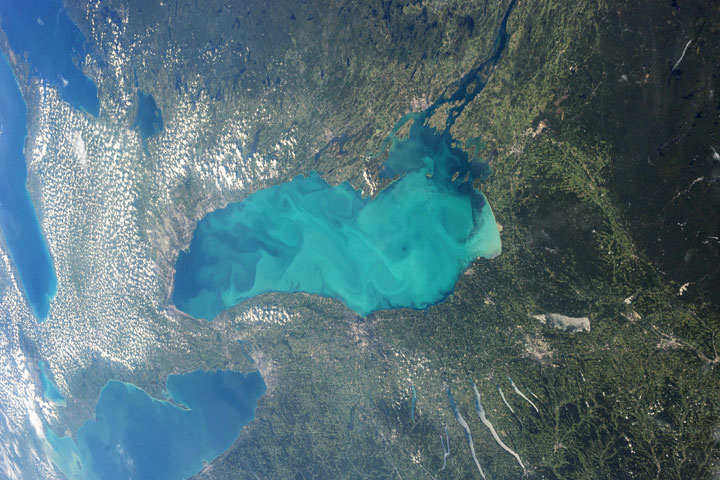UPDATE: This story has been updated to note that scientists are refuting NASA’s claims. The updated story can be found here.

TORONTO – An astronaut aboard the International Space Station (ISS) photographed a large plankton bloom in Lake Ontario.
The microscopic cyanobacteria, or blue-green algae, is a result of something called harmful algal blooms (HAB).
Algae that forms in the water can be caused by a variety of factors including drought, invasive species, changes in precipitation and nitrogen of phosphorus run-off.
When there is too much algae in the water, it can cause hypoxia, a reduction in oxygen in the bottom waters that kills off fish and other aquatic life.
Phosphorus is present in agricultural fertilizers, manure and organic wastes. Though essential to life, too much phosphorus can promote algal growth.
The Great Lakes is currently battling increased algae blooms. Last week, the International Joint Commission, a collaborative group between Canada and the United States aimed at managing joint waterways, recommended in a draft report that both countries curb runaway algae which is responsible for algae blooms in Lake Erie.




Comments